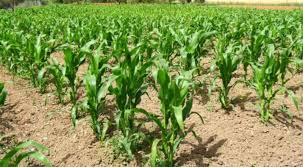mung bean farming
Climate and Soil Requirements: Mung beans thrive in warm climates with temperatures ranging between 25 to 35 degrees Celsius (77 to 95 degrees Fahrenheit). They require a frost-free growing season of about 90 to 120 days. Mung beans can grow in a variety of soils, but they prefer well-drained loamy or sandy soil with a pH level between 6.0 and 7.5.
Seed Selection: Choose high-quality mung bean seeds from a reputable source. Look for seeds that are disease-free, have good germination rates, and are suitable for your specific growing region.
Land Preparation: Prepare the land by plowing or tilling the soil to a depth of 15 to 20 cm (6 to 8 inches) to ensure good aeration and root development. Remove any weeds or debris from the field before planting.
Planting: Mung beans can be sown directly into the field or started in a nursery and transplanted later. The ideal time for planting depends on your specific location and climate. Sow the seeds at a depth of about 2.5 to 5 cm (1 to 2 inches) and space them about 10 to 15 cm (4 to 6 inches) apart in rows. The spacing can vary depending on the variety and farming practices.
Watering and Irrigation: Mung beans require regular watering, especially during the flowering and pod development stages. Adequate soil moisture is essential for optimal growth. Monitor the soil moisture levels and irrigate as needed. Avoid overwatering, as it can lead to diseases and root rot.
Fertilization: Conduct a soil test to determine the nutrient requirements of your mung beans. Generally, mung beans benefit from a balanced fertilizer application. Apply organic or chemical fertilizers based on the recommendations from your local agricultural extension office.
Weed and Pest Control: Weed management is crucial during the early stages of mung bean growth. Use manual or mechanical methods to control weeds, as chemical herbicides can damage the crop. Monitor the crop regularly for pests, such as aphids, thrips, and mites. Use appropriate insecticides or integrated pest management techniques to minimize pest damage.
Disease Management: Common diseases affecting mung beans include powdery mildew, bacterial blight, and mosaic viruses. Follow proper crop rotation practices, maintain good field hygiene, and use disease-resistant varieties to reduce the risk of diseases. Fungicides or other treatments may be necessary if diseases become a problem.
Harvesting: Mung beans are ready for harvest when the pods turn yellow and the seeds inside are mature. Harvest the crop by cutting the plants close to the ground. Allow the harvested plants to dry in the field for a few days. Thresh the plants to separate the seeds from the pods, and then winnow or use other methods to remove debris.
Storage: Store the mung beans in a cool, dry place with low humidity to prevent mold or insect infestation. Properly dried and stored mung beans can have a shelf life of several months.
Remember to consult local agricultural experts, extension offices, or experienced farmers in your area for specific recommendations and best practices based on your location and growing conditions.







Comments
Post a Comment